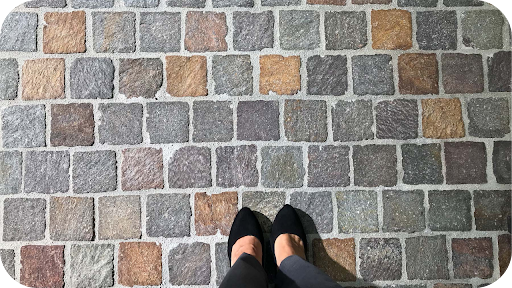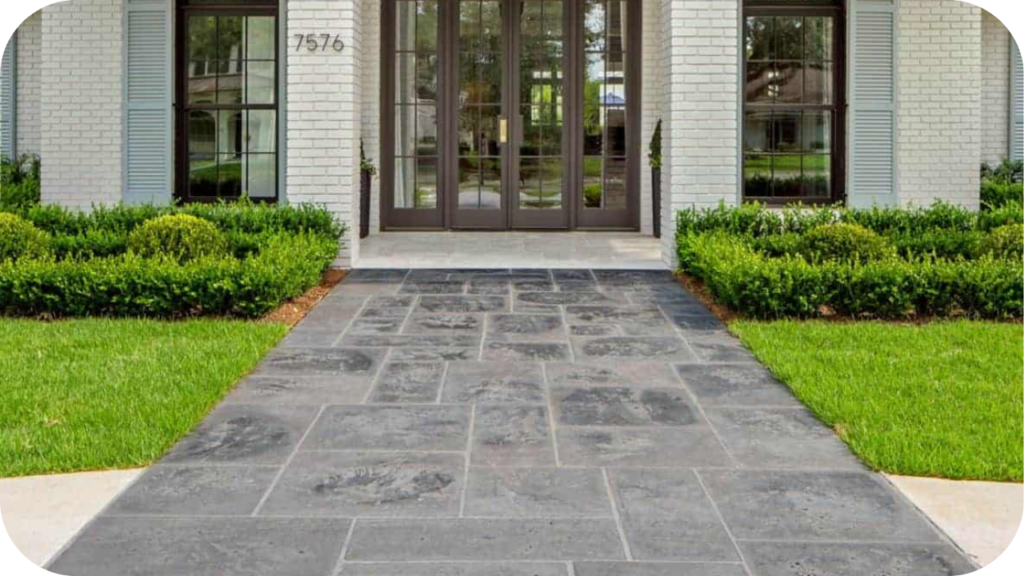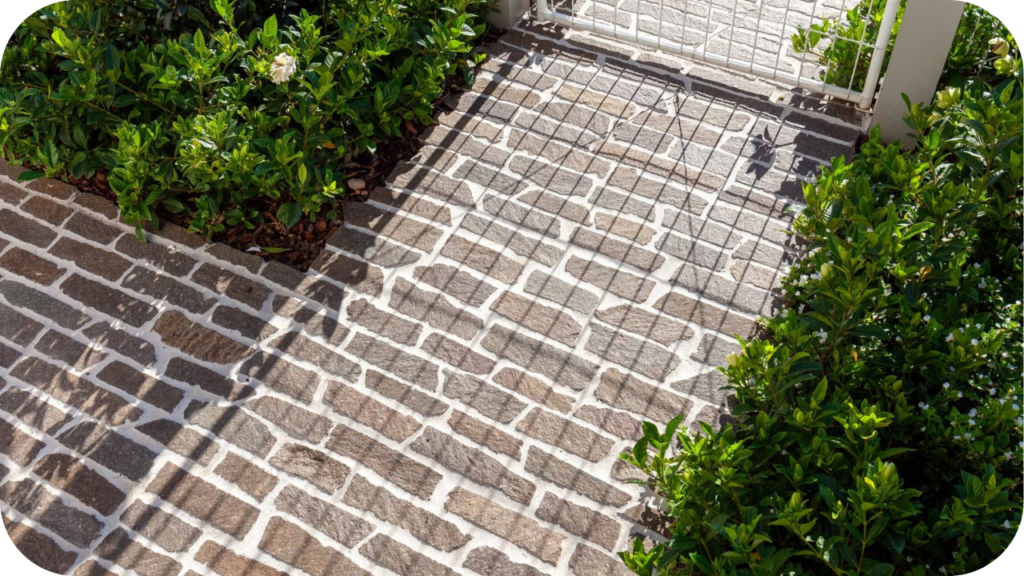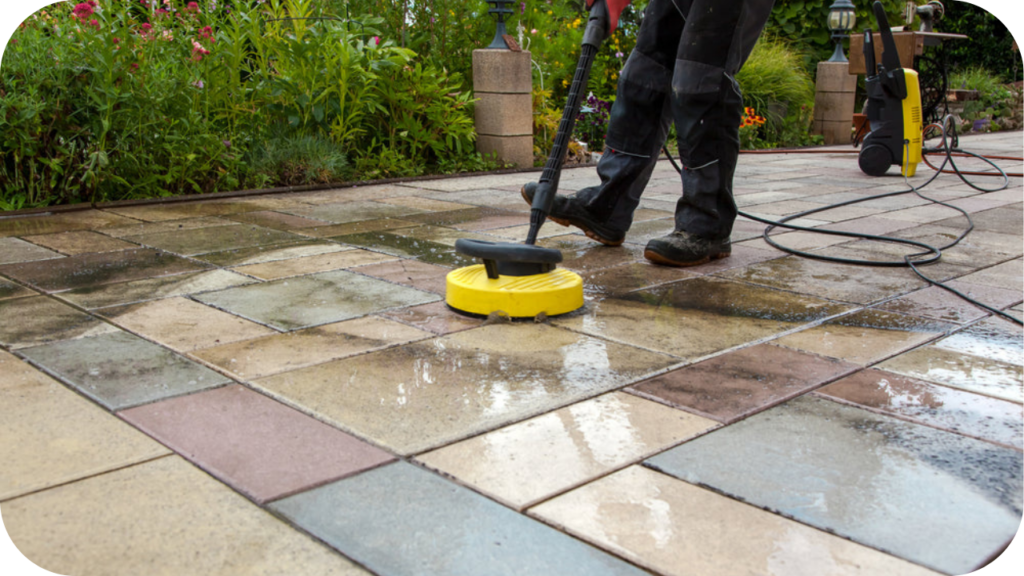The Hotel Secret: Why Luxury Facades Are Always Stone
Picture yourself standing before a grand hotel where the morning sun warms a limestone facade, each vein and texture glowing with quiet elegance. The surface feels alive, carrying history and strength in every detail.
Stone facades do more than cover a building; they set the tone for luxury, permanence, and prestige. For high-end hotels, this first impression is everything. Guests often decide what to expect from their stay before they ever step inside.
In this article, we’ll uncover why luxury hotel facades are almost always stone, the timeless benefits they bring, and the design styles shaping the world’s most memorable hotels.
Why Facades Matter in Luxury Hotels
A hotel’s facade is more than an exterior wall; it is the first handshake with every guest. Before anyone walks through the lobby doors, they are already forming an impression based on what they see outside.
A well-crafted facade communicates trust, prestige, and attention to detail, all qualities travellers expect from luxury hotels. Stone facades play an essential role in this experience because they look timeless and reassuring, suggesting the hotel will offer comfort that lasts beyond a single stay.
In competitive cities where hotels compete for attention, the exterior often decides who gets noticed first. A strong facade not only draws guests in but also reinforces the sense of exclusivity that defines true hospitality.
Why Stone Defines Hotel Grandeur
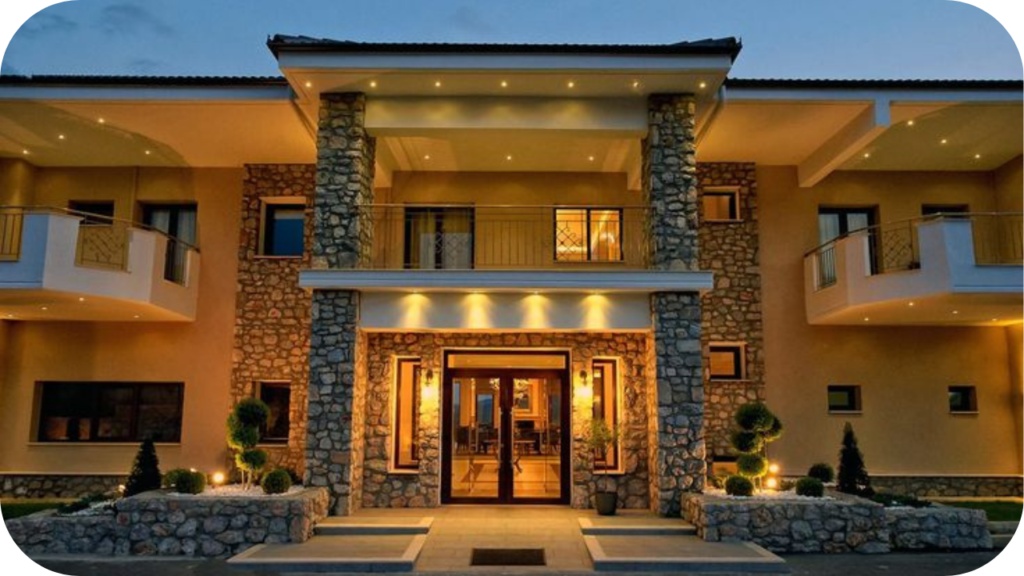
Stone facades aren’t just beautiful to look at. They deliver lasting advantages that make them the first choice for luxury hotels around the world. Here are the key reasons stone continues to define grandeur.
1. Provides Lasting Durability
Stone is built to withstand time. Unlike timber or plaster that wear quickly, stone resists decay, heavy use, and harsh climates. This ensures hotel facades stay strong and appealing for generations with minimal maintenance.
2. Conveys Prestige and Authority
From marble to granite, stone immediately communicates exclusivity. Guests associate stone facades with heritage, permanence, and sophistication. This creates a powerful first impression that strengthens a hotel’s reputation before they even walk inside.
3. Enhances Luxury Appeal Naturally
Stone’s textures, colours, and depth make it synonymous with elegance. Whether used in traditional or modern designs, stone facades instantly enhance a hotel’s atmosphere, offering timeless beauty that artificial materials cannot match.
4. Offers Strong Return on Investment
Though more expensive upfront, stone reduces long-term costs. Its resilience lowers repair needs while increasing property value. For luxury hotels, this means reliable returns and a facade that continues to attract guests year after year.
5. Resists Weather in Any Climate
Coastal winds, tropical humidity, or city pollution are no match for stone. Its natural ability to resist erosion and fading ensures hotel facades remain striking and dependable in any environment or season.
Best Stones for Luxury Hotel Facades
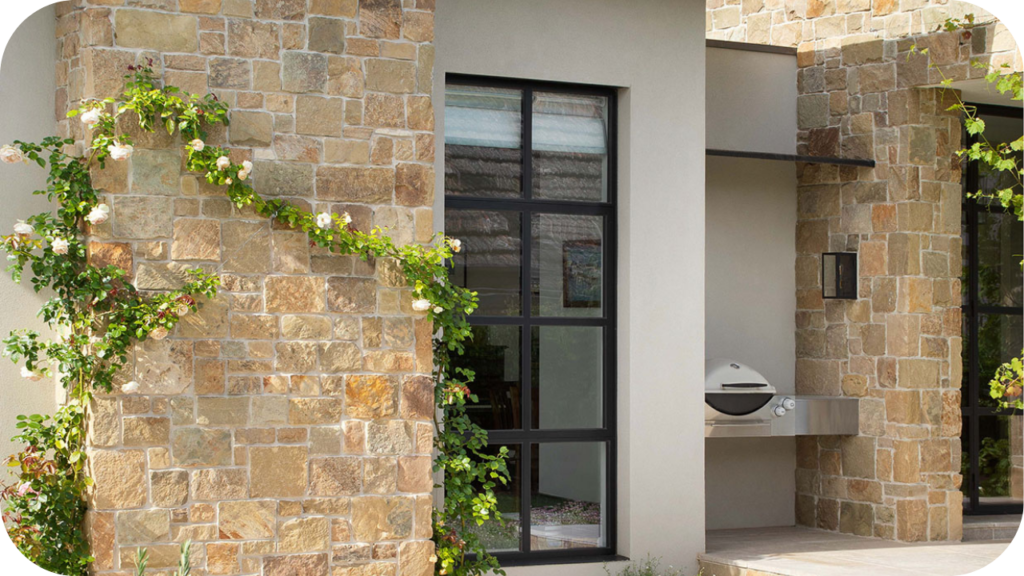
Luxury hotels rely on stone facades not only for elegance but also for strength and endurance. Below are the standout materials that bring timeless appeal to hotel exteriors worldwide.
1. Granite Stone Facades
Granite is renowned for its strength and durability, making it ideal for hotels that need a facade to withstand constant weather exposure while looking refined. Varieties such as Buffalo Granite or Hotham Granite highlight the bold textures granite can bring.
2. Limestone Stone Facades
Limestone offers timeless sophistication, often chosen for its softer tones and welcoming appeal. It adapts well to both classic and contemporary designs, with examples like Jamieson Limestone and Beloka Limestone showing its versatility in colour and texture.
3. Sandstone Stone Facades
Sandstone is valued for its warmth and natural charm, creating facades that feel both inviting and enduring. Options like Charlotte Sandstone or Australiana Sandstone illustrate how this material adds character to luxury hotel exteriors.
4. Quartz Stone Facades
Quartz provides a polished and elegant finish that works well in both subtle and statement facades. Varieties including Shoreham Quartz and Blue Ridge Quartz demonstrate the range of tones quartz can deliver to hotel architecture.
5. Travertine Stone Facades
Travertine is prized for its soft, understated luxury, offering texture and depth without overpowering the design. Examples such as Sorrento Travertine or Classic Travertine show how it creates facades that feel refined and timeless.
Stone Styles That Inspire Awe

Stone facades can be crafted into a wide range of styles, each bringing a different expression of luxury. Here are the standout ways hotels use stone to leave a lasting impression.
- Grand Entrances with Granite: Granite works perfectly for large hotel entrances, where smooth finishes or bold patterns project strength, luxury, and permanence. It creates an unforgettable first impression for guests approaching the building.
- Stacked Walls with Sandstone: Sandstone in stacked or irregular layouts creates dramatic texture, giving facades warmth and depth. This style combines durability with rustic charm, making hotels stand out in both busy cities and natural landscapes.
- Symmetry with Limestone Ashlar: Limestone adapts well to ashlar patterns, where clean lines and consistent blocks form timeless facades. This style works beautifully for hotels blending classical elegance with modern architectural designs.
- Blended Quartz Finishes: Quartz provides tonal variety, making it ideal for blended finishes that add depth and unique character. This approach ensures every facade feels distinctive, with no two hotels looking the same.
- Travertine for Subtle Layers: Travertine is often used in layered or linear styles, giving facades understated elegance. Its soft tones and textures create timeless exteriors that feel refined without being overwhelming.
Global Inspirations in Stone Facades
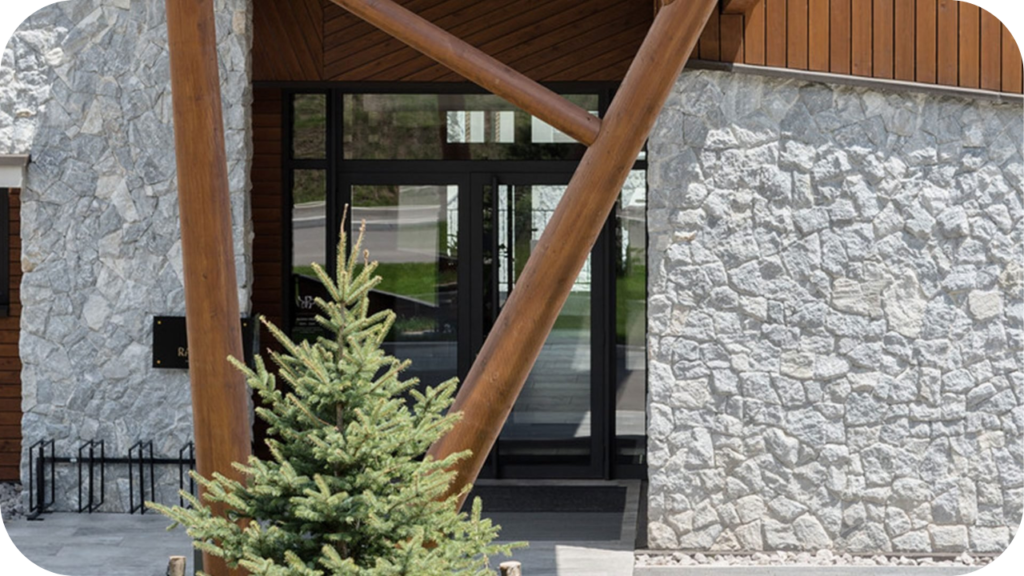
Stone facades have shaped iconic buildings across the world, blending heritage character with modern design to define true luxury. Here are global inspirations that continue to influence timeless architecture.
1. European Palaces with Granite Grandeur
Granite has framed Europe’s palaces and luxury hotels for centuries. Its polished strength symbolises permanence and prestige, offering lessons for Australian architects seeking facades that balance durability with a refined sense of authority.
2. Sydney’s Sandstone Heritage Hotels
Sydney’s early hotels and public buildings highlight sandstone’s warm tones and enduring strength. These facades remain iconic, showing how sandstone continues to suit both heritage restoration and contemporary Australian design projects.
3. Middle Eastern Limestone Elegance
Hotels across the Middle East showcase limestone for its cooling qualities and understated sophistication. This influence aligns with Australian coastal and urban builds where limestone delivers both elegance and practical resilience in warm climates.
4. Asian Quartz-Inspired Modernism
Quartz is a favourite in Asia’s modern hotels, where clean lines and tonal variety define contemporary style. This trend inspires Australian projects seeking bold, geometric facades that remain naturally grounded through organic stone finishes.
5. Mediterranean Travertine Resorts
Mediterranean resorts often feature travertine, prized for its layered textures and soft finish. Its relaxed luxury is well-suited to Australia’s coastal regions, where sunlit facades benefit from travertine’s timeless, sophisticated appeal.
Care and Maintenance of Stone Facades
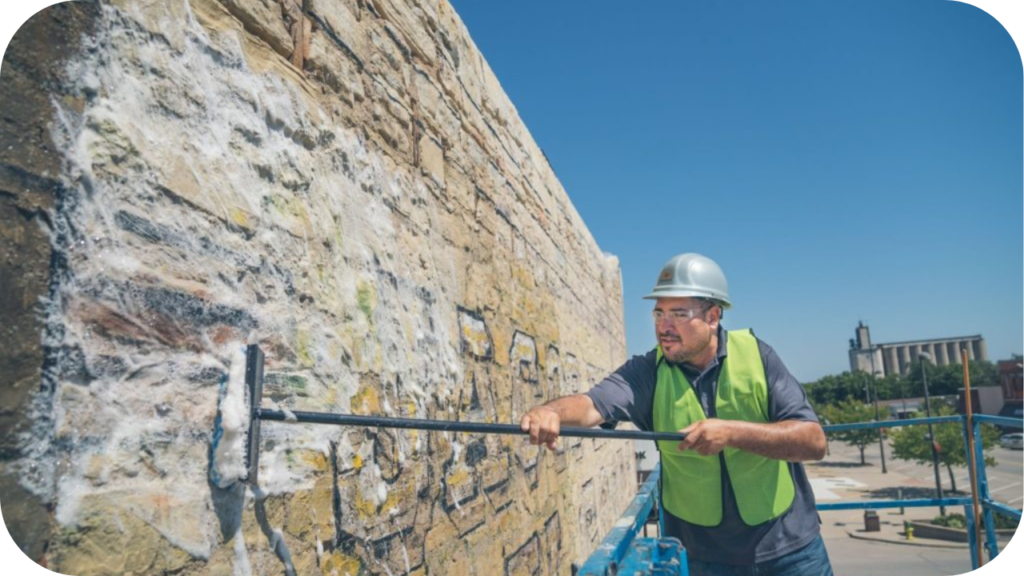
Stone facades are built to last, but they still benefit from simple upkeep. Here are practical care tips that preserve their beauty and ensure long-term performance.
- Clean regularly: Wash facades with clean water and mild soap to remove dirt, dust, and pollution build-up. Avoid harsh chemicals that can strip protective finishes and cause permanent discolouration.
- Inspect often: Check frequently for cracks, chips, or loose stonework that may weaken the structure. Addressing small problems quickly prevents costly repairs and maintains long-term safety and performance.
- Seal porous stones: Apply quality sealants to limestone or travertine surfaces to reduce staining from moisture, pollutants, and organic growth, helping preserve natural colour variations and textures for decades.
- Maintain drainage: Keep gutters, downpipes, and weep holes free from leaves or debris. Proper drainage reduces water damage, preventing erosion, mould growth, and weakening of the stone facade over time.
- Engage professionals: Arrange regular deep cleaning, inspections, or resealing with stone specialists. Professional care enhances visual appeal while safeguarding durability, ensuring facades continue projecting luxury and strength for generations.
- Protect surrounding areas: Trim nearby vegetation and avoid placing irrigation systems close to stone walls. Excess water and overgrowth can stain surfaces and accelerate deterioration if left unchecked.
Give Your Facade the Luxury It Deserves
A stone facade offers more than striking beauty. It sets the tone for lasting luxury, giving hotels a commanding presence and ensuring guests remember their stay before stepping inside.
Choosing stone means investing in permanence as well as elegance. Hotels that settle for weaker materials risk fading exteriors, constant maintenance, and lost opportunities to showcase their true standard of hospitality.
With Splendour in Stone, your facade can achieve the perfect balance of style and durability. Contact us today to begin creating a design that gives your building the luxury it deserves.


